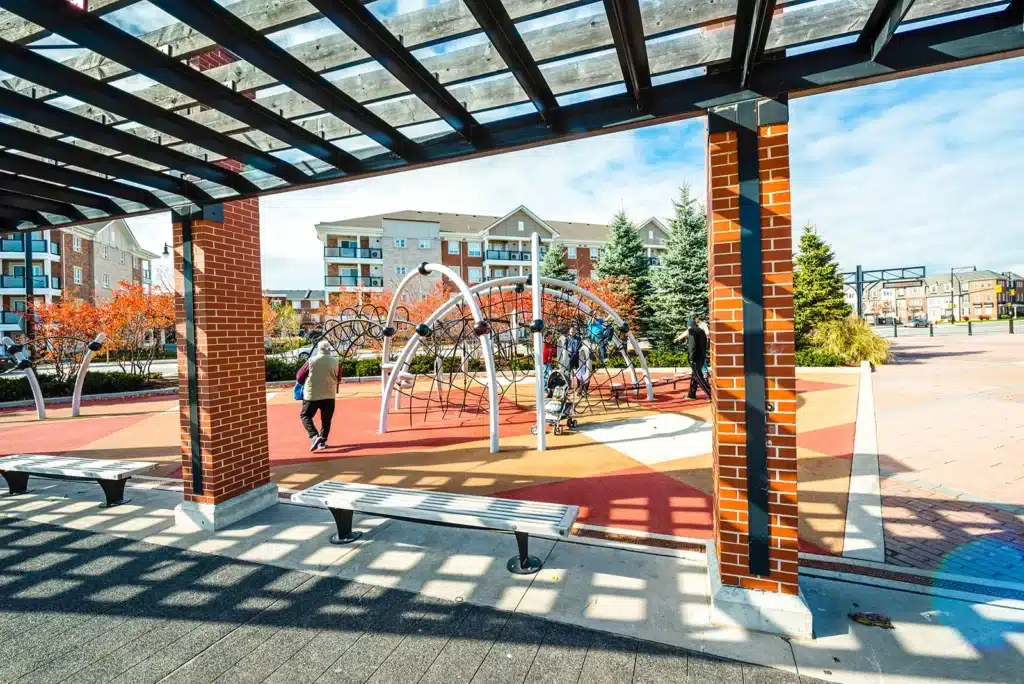Part of the Stories from the Greenbelt series
Growth, municipal finances, and integrated planning – What’s the Greenbelt connection?
The phrase “growth pays for growth” is an oft-heard although seriously misleading refrain, one that seems almost designed to put our minds to rest about how governments pay for growth. If growth pays for itself, after all, what is there to worry about? Despite this mesmerizing mantra, municipal finance is becoming an increasingly “hot” topic in the Greater Golden Horseshoe (GGH) as land and housing prices escalate, municipal infrastructure debt climbs, and there is increasing pressure on households in terms of property taxes and user fees. Developers are pushing back on the hefty municipal fees imposed to pay for new infrastructure and the province wants to ensure that municipalities are less reliant on provincial grants to pay for infrastructure refurbishment and replacement.
Growing in more compact ways, relying more on intensifying existing urban areas and creating dense, mixed-use new communities can reduce long-term financial commitments and ensure better fiscal health now and for generations to come.
All of these concerns are intimately tied to decisions municipalities make related to how and where they will grow. This link arises for the simple reason that growth patterns determine infrastructure needs and those investments are essentially eternal – once the infrastructure is in the ground, municipalities are forever responsible for operating, maintaining and replacing it. Growing in more compact ways, relying more on intensifying existing urban areas and creating dense, mixed-use new communities can reduce long-term financial commitments and ensure better fiscal health now and for generations to come. Unfortunately, municipalities in the GGH don’t always take into account the long-term financial impacts of their growth decisions, contributing to urban sprawl in the region.
To kick off the two-year research commissioned by the Greenbelt Foundation looking into municipal finance practices, titled Municipal Finances and Growth Planning in the Greater Golden Horseshoe: Opportunities for Better Integration for Support Smart Growth, I identified 40 measures that the province and municipalities in the GGH could put in place to achieve better integration between growth planning and financial management. It turns out, however, that narrowing in on specific measures to include in the report presented a complicated task that could involve a lot of potential pitfalls; recommendations have to be politically feasible, account for the situational nuances of the many local jurisdictions making up the GGH, respect municipal autonomy, promote social equity, and have the desired impact with minimum side effects, such as raising housing prices. Getting the analysis and recommendations right would need more than a passing familiarity with a wide variety of subject matters, including governance, land-use planning, engineering, municipal finance, and political issues – touching on many topics outside my usual bailiwick.
Due to the complexities involved, I decided to take a “collective intelligence” approach to the project that would rely on the knowledge and experience of engaged experts in the GGH to guide the research. Working with staff at the Greenbelt Foundation, 13 academics and practitioners involved in municipal finance and planning matters were invited onto an advisory panel that would inform and validate the research. I adopted (and adapted) a unique process called the Delphi method, which allows a researcher to get structured feedback from expert advisors in order to navigate a complex topic.
Typically, the method begins with the researcher setting up a panel of academic experts and engaged practitioners, who generally remain anonymous to each other in order to avoid panelists being influenced by reputations or other factors. The researcher formulates statements and questions and submits them in the form of a survey to the panelists, who respond in an agree/disagree format and provide commentary to explain their responses. The researcher tabulates and synthesizes the comments, shares the results with the panel, and generates a new set of statements and questions for another round as the research questions are gradually answered.
This turned out to be a rewarding and effective way to manage this complex topic. After conducting eight rounds of structured surveys with the panel – along with dozens of background interviews with officials directly involved in managing municipal and provincial programs – a set of recommendations emerged that are presented in the final report. Not every member of the panel agreed with every recommendation, but I hope their knowledge has led to a report that contributes to the conversation on municipal finances and growth planning in a meaningful way at this important juncture.
Ray Tomalty is a research consultant in urban sustainability and an adjunct professor in the School of Urban Planning at McGill University. He has a PhD in urban planning from the University of Waterloo and a Master’s in public administration from Queen’s University.
The findings in the Municipal Finances and Growth Planning in the Greater Golden Horseshoe report show that more efficient and integrated planning is needed to ensure municipalities are generating the revenue needed to meet the financial needs of new development and infrastructure projects. Also, the continued success of the Ontario Greenbelt is inextricably linked to sustainable and smart growth objectives. That link has never been clearer than currently when the GGH region faces mounting challenges of rapid population growth, housing affordability, rising municipal debt, climate change, and loss of farmland and biodiversity.
Municipalities in GGH are at different stages of financial and land-use planning integration, and there are examples of good practices to build upon. In 2014, Peel Region adopted a new approach to integrated growth planning, and by the end of 2020, a more efficient system had contributed to a $584-million reduction in the infrastructure debt compared to a 2015 projection. In 2016, Mississauga implemented a stormwater charge based on the total roof area of properties. The charge covers the full cost of operating and maintaining the stormwater management system for the city, discourages inefficient land use, and rewards on-site controls to reduce stormwater runoff.




